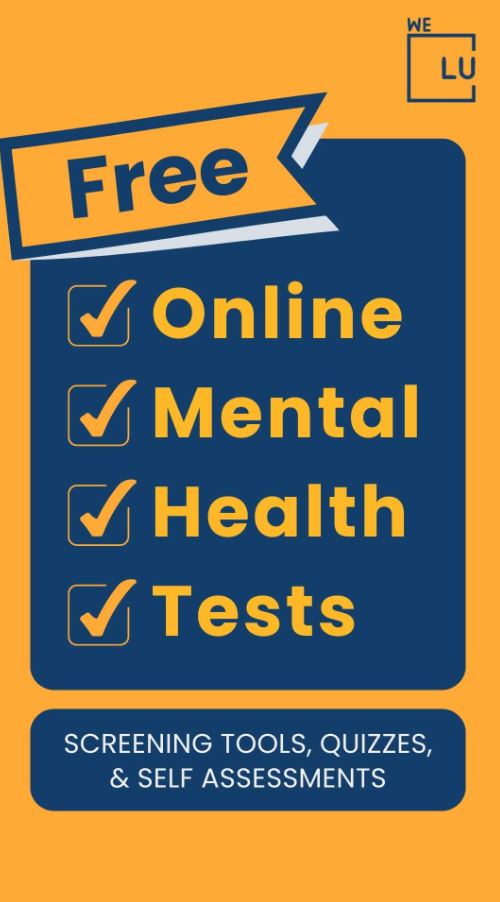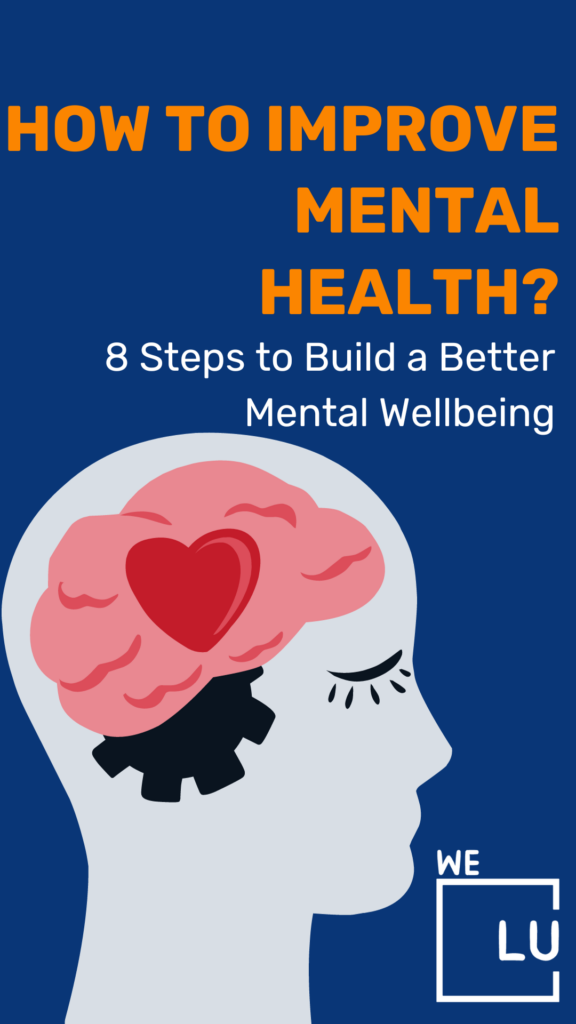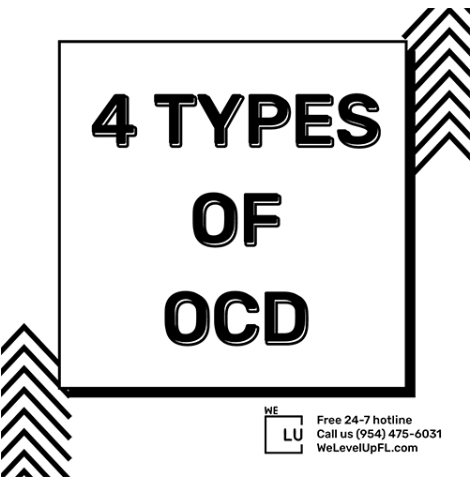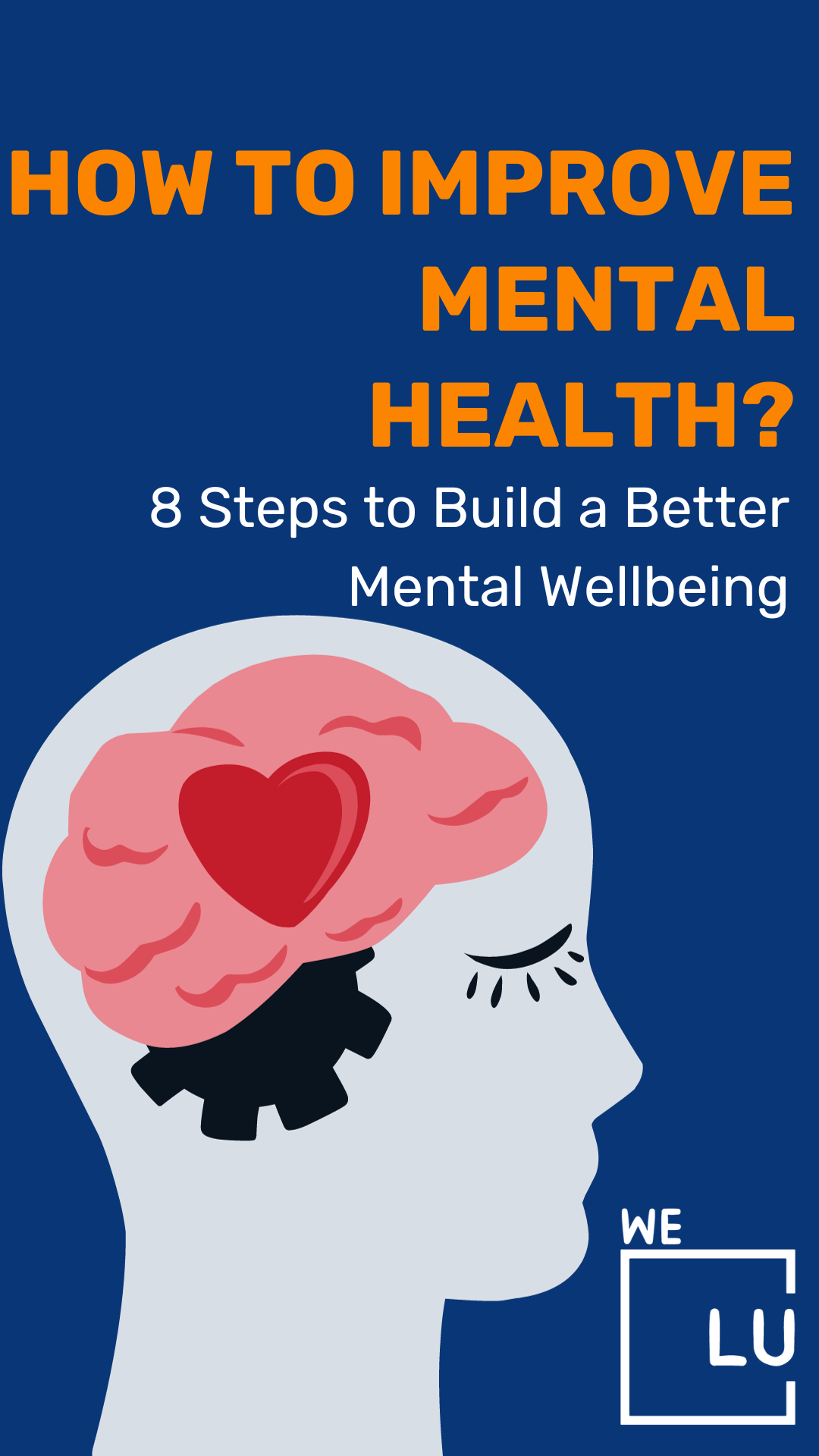Yale Brown Obsessive Compulsive Scale
Please take the following quiz to assess if you are experiencing signs and symptoms of obsessive-compulsive disorder (OCD). Ensure you answer the questions honestly and thoroughly, reflecting your current emotional state rather than how you aspire to feel. It is important to remember that seeking help is always an option, regardless of the time that has passed. Let’s begin with the “Yale Brown Obsessive Compulsive Scale” from We Level Up’s treatment center network. Obsessive-compulsive disorder (OCD) is a persistent condition characterized by uncontrollable and recurring thoughts (obsessions), repetitive behaviors (compulsions), or a combination of both. Some common behavioral symptoms of OCD include:
- Anxiety related to contamination or cleanliness concerns.
- Desiring orderliness and balance.
- Intrusive thoughts, encompassing aggression, sexual, or religious themes, that are unwanted.
Please complete the free Yale Brown Obsessive Compulsive Scale to gain insights into your circumstances. This concise Yale Brown Obsessive Compulsive Scale aims to identify behavioral patterns that may indicate a tendency toward OCD. While it can provide valuable information, it is essential to note that it is not intended as a comprehensive diagnosis or for diagnosing a specific type of OCD. Depending on your responses, you may receive a potential indication of OCD. If so, we are here and prepared to offer assistance. However, consulting with a healthcare professional for a clinical diagnosis is crucial. Please feel free to contact us 24/7 with any questions, and rest assured that no obligations are involved.
Take Our Free Yale-Brown Obsessive Compulsive Scale
Take Our Yale Brown Obsessive Compulsive Scale Y BOCS Online Confidential Results
The Yale-Brown Obsessive Compulsive Scale (Y-BOCS) is a widely used clinical assessment tool designed to measure the severity of obsessive-compulsive disorder (OCD). OCD is a mental health condition characterized by persistent, intrusive thoughts (obsessions) and repetitive behaviors or mental acts (compulsions) that an individual feels compelled to perform in response to the obsessions.
*By taking this free quiz, you may obtain your results online and in your email box. You’ll have the opportunity to opt-in to learn more about your symptoms, talk to a mental health consultant and join our newsletter. Rest assured your information is private and confidential. Results, consultations and assessment are provided without any cost to you and without any obligation. If you do not wish to provide your contact information, you may omit it during your quiz. Thank you for opting in and participating. To you best of health.
Yale Brown Obsessive Compulsive Scale Scoring Range

The Yale-Brown Obsessive Compulsive Scale (Y-BOCS) is a widely used instrument for assessing the severity of obsessive-compulsive disorder (OCD). The scoring range on the Y-BOCS provides a quantitative measure of the impact and intensity of OCD symptoms. The scale typically ranges from 0 to 40, with higher scores indicating greater severity.
The scoring is divided into two main categories: obsessions and compulsions. Each category has a maximum score of 20. The total score is derived by summing the scores from both categories. The scale considers the time spent on obsessions and compulsions, the degree of distress they cause, and the individual’s efforts to resist or control them.
The scoring range on the Y-BOCS helps clinicians and researchers objectively evaluate the extent of impairment caused by OCD symptoms. This information is valuable for treatment planning and monitoring the effectiveness of interventions. A lower score suggests milder symptoms, while higher scores indicate more severe and debilitating manifestations of obsessive-compulsive disorder.
The Benefits Of Taking The Yale Brown Obsessive Compulsive Disorder Scale Online
Taking the Yale-Brown Obsessive Compulsive Disorder Scale (Y-BOCS) online can offer several advantages for both individuals and healthcare professionals:
- Accessibility:
- Online administration makes the Y-BOCS more accessible to a broader audience. Individuals with difficulty reaching a healthcare facility can conveniently complete the assessment from their homes.
- Convenience:
- Online assessments provide flexibility in terms of timing. Participants can take the Y-BOCS at a time that suits them best, reducing scheduling conflicts and making it more convenient for those with busy lifestyles.
- Privacy and Comfort:
- Some individuals may feel more at ease and be more open when responding to sensitive questions about their obsessive-compulsive symptoms in the privacy of their environment. This can contribute to more accurate self-reporting.
- Real-time Monitoring:
- Healthcare professionals can receive real-time data for more immediate and proactive interventions. This can be particularly beneficial in monitoring symptom changes and adjusting treatment plans accordingly.
- Reduced Administrative Burden:
- The online format can streamline the data collection process, reducing the administrative burden on healthcare providers. Automated scoring systems can enhance efficiency, allowing professionals to focus more on interpretation and treatment planning.
- Digital Integration:
- Integrating electronic health records and other digital healthcare systems is more straightforward with online assessments. This integration can facilitate a more comprehensive approach to patient care by providing a centralized and organized repository of information.
- Cost-Efficiency:
- Online administration can potentially reduce costs associated with traditional paper-and-pencil assessments. There may be savings regarding materials, administration time, and data entry.
- Remote Monitoring:
- For individuals undergoing remote treatment or telehealth services, online assessments can provide a more comprehensive understanding of their condition. Remote monitoring using digital tools can support ongoing care and therapeutic adjustments.
- Data Security:
- While ensuring compliance with privacy regulations, online platforms can implement robust security measures to protect sensitive health information, potentially enhancing the confidentiality of patient data.
It’s important to note that the benefits of taking the Y-BOCS online should be weighed against potential challenges, such as ensuring the validity of responses and addressing technical issues. Not all individuals may have equal access to digital resources, so inclusivity considerations should be considered.
Once you have finished answering the Yale Brown Obsessive Compulsive Scale, please submit your responses and wait for the results. Sharing your test results with a professional healthcare counselor or mental health expert is advisable. If you require assistance, feel free to contact the We Level Up treatment center advocates for a complimentary evaluation and consultation regarding OCD. Rest assured, no obligations are involved, and your call will remain confidential and free of charge.
Get Help. Get Better. Get Your Life Back.
Searching for Accredited Drug and Alcohol Rehab Centers Near You?
Even if you have failed previously and relapsed, or are in the middle of a difficult crisis, we stand ready to support you. Our trusted behavioral health specialists will not give up on you. When you feel ready or just want someone to speak to about therapy alternatives to change your life call us. Even if we cannot assist you, we will lead you to wherever you can get support. There is no obligation. Call our hotline today.
(844) 597-1011What Is The Yale-Brown Obsessive-Compulsive Scale?
The Yale-Brown Obsessive Compulsive Scale (Y-BOCS) is a clinical tool designed to assess the severity and nature of obsessive-compulsive disorder (OCD) symptoms. It was developed by Dr. Wayne Goodman and Dr. Judith Rapoport in the late 1980s and has since become one of the most widely used instruments for evaluating OCD.
The Y-BOCS is typically administered through a semi-structured interview conducted by a trained mental health professional, such as a psychiatrist or psychologist. The interview includes specific questions about the nature and intensity of obsessions and compulsions, as well as the impact of these symptoms on the individual’s daily functioning.
The scale consists of two main parts:
- Obsessions (Part I):
- This section assesses the severity of the individual’s obsessive thoughts. It includes questions about the content of the obsessions, the time spent on them, the degree of distress they cause, and the individual’s attempts to resist or control them.
- Compulsions (Part II):
- This section focuses on the severity of compulsive behaviors. Like the obsession section, it evaluates the time spent on compulsions, the distress caused by these behaviors, and the individual’s efforts to resist engaging in them.
Each part of the Y-BOCS is scored separately, with a maximum score of 20 for obsessions and 20 for compulsions, resulting in a total maximum score of 40. Higher scores indicate more severe symptoms and more significant impairment in daily functioning.
The Y-BOCS provides a standardized way to quantify the severity of OCD, aiding in diagnosis, treatment planning, and monitoring changes in symptoms over time. It is often used in both clinical settings and research studies to assess the effectiveness of interventions and to better understand the course of the disorder.
How The Children’s Yale Brown Obsessive Compulsive Scale Differs
The Children’s Yale-Brown Obsessive Compulsive Scale (CY-BOCS) is a modified version of the original Y-BOCS explicitly designed for assessing obsessive-compulsive disorder (OCD) symptoms in children and adolescents. Here are some key differences between the two scales:
- Language and Comprehension:
- The CY-BOCS is adapted to be more suitable for children, with language and content adjusted to ensure that questions are age-appropriate and easily understandable by a younger population.
- Parental Involvement:
- In the CY-BOCS, there is often a greater emphasis on parental or caregiver input, as they may provide valuable information about the child’s symptoms. Parents may be interviewed alongside the child to gather a more comprehensive understanding of the child’s OCD symptoms.
- Observation of Behaviors:
- While both scales rely on self-reporting to a certain extent, the CY-BOCS may also involve direct clinician observation of the child’s behavior. This can be especially relevant when assessing compulsive behaviors that may not be easily communicated by the child.
- Developmental Considerations:
- The CY-BOCS takes into account the developmental differences in the presentation of OCD symptoms in children. It considers that specific obsessions or compulsions may manifest differently in children than in adults.
- Collaboration with Parents and Caregivers:
- The CY-BOCS recognizes the importance of collaboration with parents or caregivers in the assessment process. Their insights into the child’s behavior and the impact of symptoms on family life contribute to a more holistic evaluation.
- Sensitivity to Pediatric Populations:
- The CY-BOCS is specifically designed to be sensitive to the nuances of OCD symptoms in pediatric populations. It considers the unique challenges and manifestations of OCD in children and adolescents.
- Scoring System:
- The scoring system of the CY-BOCS is similar to the Y-BOCS, with separate scores for obsessions and compulsions. However, the CY-BOCS may have specific items or considerations tailored to the child’s developmental stage.
Both scales aim to provide a standardized and reliable measure of OCD severity, aiding in diagnosis, treatment planning, and outcome assessment. The CY-BOCS, with its adaptations for younger populations, allows clinicians to effectively evaluate and understand the impact of OCD on children and adolescents.
Skip To:
Learn More:
- Overcoming Self Harm OCD, Symptoms, and Treatment. Is Harm OCD Dangerous?
- Contamination OCD Symptoms, Signs and Treatment. How to Beat Contamination OCD. Emotional Contamination OCD.
- The Most Effective OCD Medication for Treatments & Recovery. Best Medication for OCD Intrusive Thoughts.
- Relationship OCD Guide, Symptoms, Causes, and Coping
- Free Online OCD Test. Do I Have OCD Test For Adults? Easy OCD Symptoms Test? Fast Test for OCD. Confidential Obsessive Compulsive Disorder Test.
- Guide to OCD Treatment. Uncover Medication Treatment for OCD. Best Obsessive Compulsive Disorder Treatment Modalities. OCD Symptoms & Diagnosis.
- PMDD Test, Do I Have Premenstrual Dysphoric Disorder?
- Agoraphobia Test, Symptoms & Signs Of Agoraphobia
- Emotional Abuse Test, Am I In An Abusive Relationship? Emotionally Abusive Relationship Test
- Free Attachment Style Test, Fast & Easy Relationship Attachment Style Test

Yale-Brown Obsessive Compulsive Scales Validity
The Yale-Brown Obsessive Compulsive Scale (Y-BOCS) has demonstrated good reliability and validity, making it a widely used instrument in both clinical and research settings for assessing the severity of obsessive-compulsive disorder (OCD). Here are critical aspects of the Y-BOCS validity:
- Content Validity:
- The Y-BOCS was developed by experts in the field of OCD, including Dr. Wayne Goodman and Dr. Judith Rapoport. The scale’s items were carefully selected to cover a broad range of obsessions and compulsions commonly associated with OCD. This process ensures that the content of the scale is relevant and representative of the disorder.
- Construct Validity:
- Construct validity refers to the extent to which the Y-BOCS measures the underlying construct it is intended to assess—in this case, the severity of OCD symptoms. Numerous studies have provided evidence supporting the construct validity of the Y-BOCS, showing that the scale effectively distinguishes between individuals with varying degrees of OCD severity.
- Convergent and Divergent Validity:
- Convergent validity is demonstrated when the Y-BOCS correlates positively with other measures of OCD severity, indicating that it converges with similar constructs. Divergent validity is demonstrated when the scale does not correlate strongly with measures that assess unrelated constructs. Studies have generally supported the convergent and divergent validity of the Y-BOCS.
- Discriminant Validity:
- Discriminant validity refers to the scale’s ability to differentiate between individuals with OCD and those without the disorder. The Y-BOCS has shown good discriminant validity by effectively distinguishing between individuals with OCD and those with other psychiatric conditions or no psychiatric disorders.
- Predictive Validity:
- Predictive validity assesses how much the Y-BOCS can predict future outcomes or treatment responses. Several studies have demonstrated the predictive validity of the Y-BOCS by showing that baseline scores on the scale can predict the course of OCD symptoms and response to treatment over time.
- Sensitivity to Change:
- The Y-BOCS is sensitive to changes in symptom severity over time, making it a valuable tool for assessing treatment effectiveness. Its sensitivity to change is helpful in clinical trials and therapeutic interventions.
It’s important to note that while the Y-BOCS is a well-established and widely used instrument, no assessment tool is without limitations. The context in which the Y-BOCS is used, including the population being assessed and the specific goals of the evaluation, should be considered when interpreting its results. Additionally, ongoing research and advancements in the field may contribute to further understanding and refinement of OCD assessment tools.
Obsessive Compulsive Disorder Treatments Fact Sheet
OCD Treatment Without Medication
While medication can be helpful for some individuals with obsessive-compulsive disorder (OCD), it is not always necessary or preferred. There are several non-medication treatment options available that have shown effectiveness in managing OCD symptoms. Here are some common approaches:
- Cognitive-Behavioral Therapy (CBT): CBT is a widely used and evidence-based therapy for OCD. It involves working with a therapist to identify and challenge negative thought patterns and beliefs contributing to OCD symptoms.
- Exposure and Response Prevention (ERP): As mentioned earlier, ERP is a specific form of CBT designed to address OCD symptoms directly. It involves exposing oneself to fears or obsessions while intentionally preventing the associated compulsive behaviors. This process helps individuals learn to reduce anxiety and break the cycle of OCD.
- Acceptance and Commitment Therapy (ACT): ACT is another therapy that focuses on helping individuals accept their obsessions or intrusive thoughts rather than trying to control or suppress them. It aims to change individuals’ relationship with their thoughts and develop psychological flexibility to engage in activities that align with their values.
- Mindfulness-Based Therapies: Mindfulness techniques, such as mindfulness-based stress reduction (MBSR) or mindfulness-based cognitive therapy (MBCT), can help manage OCD symptoms. These therapies teach individuals how to observe their thoughts and emotions without judgment, reducing their psychological distress related to OCD.
- Support Groups: Joining OCD support groups can allow individuals to connect with others who understand their experiences. Sharing concerns, insights, and coping strategies with peers who have gone through similar challenges can be beneficial and help in finding support and understanding.
The effectiveness of treatment approaches can differ between individuals, and each treatment plan should be tailored to their specific needs. Consulting with a qualified mental health professional experienced in OCD is essential to determine the most appropriate treatment options.
Giving any treatment approach time and effort is crucial, as progress can sometimes take time. Patience, persistence, and consistent engagement in therapy are essential to successfully managing OCD symptoms without medication.
Popular OCD treatment medication
The FDA-approved medications for treating OCD include:
- Clomipramine (Anafranil) for adults and children ten years and older
- Fluoxetine (Prozac) for adults and children seven years and older
- Fluvoxamine for adults and children eight years and older
- Paroxetine (Paxil, Pexeva) for adults only
- Sertraline (Zoloft) for adults and children six years and older
Your doctor may prescribe alternative antidepressants or psychiatric medications depending on your specific needs.
Take charge of your OCD and regain control over your life with effective treatment options.
If you or someone you’re concerned with is struggling with OCD, seeking professional help to explore ERP as a potential treatment option is recommended. Call We Level Up for OCD therapy programs. Discover how you can get your life back.
Exposure and Response Prevention as Treatment for Obsessive Compulsive Disorder
Exposure and response prevention (ERP) is a type of cognitive-behavioral therapy widely considered the leading treatment of obsessive compulsive disorder. It involves a focused and systematic approach to gradually exposing individuals to their obsessions or fears and preventing them from engaging in their usual compulsive responses.
The main principle behind ERP is to help individuals confront their obsessions and anxieties directly while gradually reducing their reliance on compulsions or rituals to relieve the anxiety. By repeatedly facing the feared situations or thoughts, individuals gradually learn to tolerate the anxiety without resorting to their usual rituals or behaviors.
Here are some critical aspects of ERP treatment of OCD:
- Exposure: Exposure exercises involve intentionally and repeatedly exposing oneself to the thoughts, images, or situations that trigger OCD obsessions. This exposure can be done in real life or through imagination.
- Response Prevention: Response prevention involves intentionally resisting the urge to engage in the compulsions or rituals that usually follow the obsessions. This helps break the cycle of anxiety and compulsive behavior.
- Hierarchy of Exposure: Exposure exercises typically start with situations or thoughts that generate mild to moderate anxiety and gradually progress to more challenging ones. This hierarchy allows individuals to build up their tolerance and develop skills to confront their fears step by step.
- Supportive Guidance: ERP is usually conducted under the guidance of a trained mental health professional who assists with designing and implementing the exposure exercises. They provide support and guidance and help individuals navigate the challenging process of facing their fears.
- Homework Assignments: Individuals are often given homework assignments to practice the exposure exercises outside therapy sessions. This helps in reinforcing the learning and generalizing the skills to daily life.
ERP is highly effective in reducing the symptoms of OCD. It helps individuals regain control over their lives and reduces the distress caused by obsessive thoughts and compulsive behaviors. However, ERP should be conducted under the guidance of a qualified mental health professional specializing in treatments for obsessive compulsive disorder.

Obsessive-Compulsive Disorder (OCD) manifests in various subtypes, including contamination OCD, checking OCD, symmetry and ordering OCD, and intrusive thoughts OCD, leading to mental or behavioral rituals. These subtypes reflect different themes and patterns of obsessions and compulsions that individuals with OCD can experience, although the disorder is highly individualized, and symptoms may overlap or vary.
Understanding The Symptoms and Treatments of OCD
Download the file below for more understanding of OCD. The National Institute of Mental Health of NIMH has made this file available and accessible for download to help raise awareness about OCD.

Get Your Life Back
Find Hope & Recovery. Get Safe Comfortable Detox, Addiction Rehab & Dual Diagnosis High-Quality Care.
Hotline(844) 597-1011OCD Statistics
OCD is a chronic condition, and long-term maintenance treatment is often necessary to prevent relapse. With ongoing treatment and management, many individuals with OCD can achieve long-term symptom control and improved quality of life.
3 Million Affected
OCD is estimated to affect about 1% to 2% of the U.S. population, around 2 to 3 million adults.
Source: NCBI
60% Untreated
Unfortunately, many individuals with OCD do not seek professional help or receive appropriate treatment. Studies have suggested that only about 40% to 60% of individuals with OCD receive treatment.
Source: NCBI
90% Improvement
Combining medication and CBT is more effective than either treatment alone. Studies suggest that around 70% to 90% of individuals with OCD respond favorably to combination therapy.
Source: NCBI
What Do You Know About OCD? 4 Types of OCD Video
What do you know about OCD? Obsessive-Compulsive Disorder (OCD) is a chronic disorder in which an individual has uncontrollable, reoccurring thoughts (obsessions) and behaviors (compulsions).
There are four main types of OCD:
- Checking OCD, where individuals have compulsions to repeatedly check things such as locks, appliances, or personal belongings.
- Contamination OCD is characterized by an intense fear of germs or contaminants, leading to compulsive cleaning, handwashing, and avoidance of certain places or situations.
- Intrusive Thought OCD involves distressing and unwanted thoughts or mental images that provoke anxiety and lead to compulsive behaviors or rituals.
- Symmetry and Ordering OCD, where individuals are obsessed with symmetry, exactness, or specific arrangements, often causing them to engage in repetitive behaviors or rituals to achieve perfection.
The good news is OCD, or obsessive-compulsive disorder, is a treatable condition with various therapeutic interventions and medications. With proper OCD treatment and support, individuals with OCD can experience significant improvements in their symptoms and overall quality of life.
Make this your opportunity to improve your life. Call today to speak with one of our treatment specialists. Get FREE mental health insurance check – https://welevelup.com/rehab-insurance/
If you or a loved one is struggling with OCD or other mental disorder(s), call for a FREE consultation 24/7 at (561) 678-0917
Experience Transformative Recovery at We Level Up Treatment Centers.
See our authentic success stories. Get inspired. Get the help you deserve.
Start a New Life
Begin with a free call to an addiction & behavioral health treatment advisor. Learn more about our dual-diagnosis programs. The We Level Up Treatment Center Network delivers recovery programs that vary by each treatment facility. Call to learn more.
- Personalized Care
- Caring Accountable Staff
- World-class Amenities
- Licensed & Accredited
- Renowned w/ 100s 5-Star Reviews
We’ll Call You
Search We Level Up Yale Brown Obsessive Compulsive Scale, Mental Health Topics & Resources
Sources
[1] Brock H, Hany M. Obsessive-Compulsive Disorder. [Updated 2023 May 29]. In: StatPearls [Internet]. Treasure Island (FL): StatPearls Publishing; 2023 Jan-. Available from: https://www.ncbi.nlm.nih.gov/books/NBK553162/
[2] Stein DJ, Costa DLC, Lochner C, Miguel EC, Reddy YCJ, Shavitt RG, van den Heuvel OA, Simpson HB. Obsessive-compulsive disorder. Nat Rev Dis Primers. 2019 Aug 1;5(1):52. Doi 10.1038/s41572-019-0102-3. PMID: 31371720; PMCID: PMC7370844.
[3] Obsessive-Compulsive Disorder – National Institute of Mental Health (NIMH)
[4] Obsessive-Compulsive Disorder and Substance Use Disorders – Substance Abuse and Mental Health Services Administration (SAMHSA)
[5] Obsessive-Compulsive Disorder – MedlinePlus (.gov)
[6] Obsessive-compulsive disorder – Office on Women’s Health (.gov)
[7] Obsessive-compulsive disorder – MedlinePlus Genetics
[8] OCD and PTSD Fact Sheet – Veterans Affairs (.gov)
[9] Obsessive-Compulsive Disorder – Agency for Healthcare Research and Quality (.gov)
[10] Modification of Cerebral Activity of Obsessive Compulsive Disorder (OCD) Patients During Cognitive and Behavioral Therapy (TOC) – Clinical Trials (.gov)




